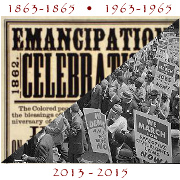When descendants of the DeWolf slave-trading family of Bristol, Rhode Island retrace the triangle trade of their ancestors in our documentary, Traces of the Trade, they visit the European slave forts of Cape Coast Castle and St. George’s Castle (Elmina). These sites were chosen because the DeWolf family traded extensively for slaves along the Gold Coast, and their most common stops were at slave forts in what is now modern-day Ghana.
In fact, for almost 150 years, Ghana, on Africa’s west coast, was the center of the British slave trade. Western traders arrived in ships loaded with manufactured goods to barter or trade for slaves. Those who were sold had often been captured in tribal warfare; some had simply been kidnapped to sell to European slave traders.
Slavery existed in Africa prior to the transatlantic trade, and in fact the earlier, trans-Saharan slave trade sent more enslaved Africans east to the Muslim world, over many centuries, than would be transported west to the Americas. However, the large-scale organization of European slave trading and the development of industry and massive plantations dependent on slave labor gave rise to a trade in humans that was staggering in its scale. Approximately 10 million enslaved people were transported in the transatlantic slave trade, at rates of up to 100,000 persons per year.
The remnants of the trade in Ghana are still visible today — in dozens of forts and castles built by Europeans between 1482 and 1786. American traders did business at trading posts run by the British, French, Dutch, Germans, Spanish, Portuguese, and others, including Cape Coast Castle and Elmina Castle, which the DeWolf descendants visited in Ghana. Many of these sites have been preserved, and attract thousands of visitors as part of the Slave Route Project of the United Nations Educational, Scientific and Cultural Organization (UNESCO). In addition to preservation efforts, Ghana has also made efforts to encourage descendants of enslaved Africans to learn more about their history. Descendants may be eligible for special visas, and the government has instituted programs to encourage Ghanaians to welcome people from the African Diaspora.
Sources: David Eltis, Stephen D. Behrendt, David Richardson, and Herbert S. Klein, eds., The Trans-Atlantic Slave Trade: A Database on CD-ROM (Cambridge, 1999); Roger S. Gocking, The History of Ghana (Westport, Conn.: Greenwood Press, 2005); William St. Clair, The Door of No Return: The History of Cape Coast Castle and the Atlantic Slave Trade (New York: Blue Bridge, 2007); Hugh Thomas, The Slave Trade: The Story of the Atlantic Slave Trade: 1440-1870 (New York: Simon and Schuster, 1997).


